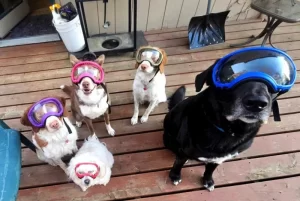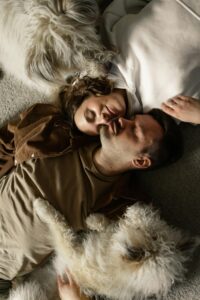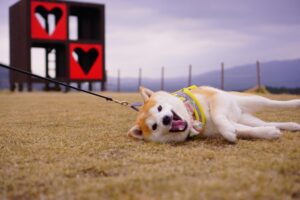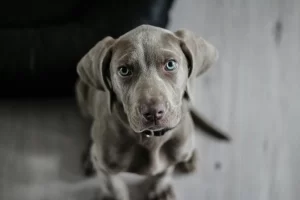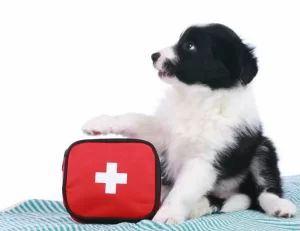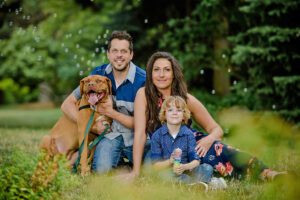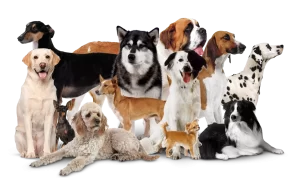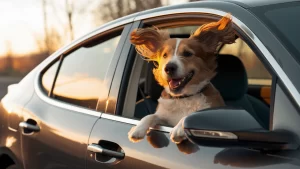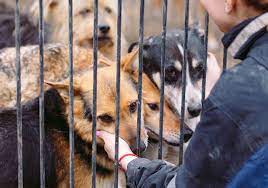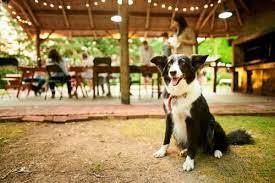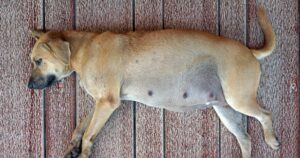As dogs get older, their comfort and activity levels can change fast. Keeping your senior dog moving and relaxed is key for their health and happiness. Gentle exercise, a cozy bed, and the right routines help support their joints and spirits.
Staying active helps maintain muscle, supports joints, and even keeps minds sharp. Comfort isn’t just about soft blankets—it’s about building a daily routine that meets your dog’s unique needs. Thoughtful care lets older dogs enjoy their golden years with less pain and more joy. For more ideas on your senior pet’s long-term health, check out the benefits of neutering and spaying pets.
Table of Contents
ToggleRecognizing the Changing Needs of Senior Dogs
 Photo by Canan YAŞAR
Photo by Canan YAŞAR
As our dogs grow older, their needs change in subtle and surprising ways. What once worked for a playful pup might not suit your slow-moving, grey-muzzled friend. Being aware of these changes early means you can adjust care and help your senior dog feel comfortable and secure.
Spotting Physical Changes
Physical signs of aging can show up gradually. Senior dogs often develop:
- White or grey hairs, especially around their face
- Joint stiffness or trouble walking up stairs
- Changes in vision or cloudy eyes
- Loss of hearing or less response to sounds
- Weight shifts, either gain from less activity or loss due to diet changes
It’s common to notice your older pup having less energy or moving with more caution. Arthritis is often a culprit, making daily walks a bit of a struggle. Adjusting routines and providing joint support beds can ease discomfort. Watch out for new lumps or bumps, as these can signal other health needs.
Want more in-depth details on the signs of aging? The American Kennel Club details common physical and mental signs in senior dogs.
Recognizing Behavioral Shifts
With age, dogs can start acting differently. You might see:
- More sleeping and napping throughout the day
- Confusion or getting “stuck” in corners
- Increased anxiety or restlessness at night
- Forgetting house training or basic routines
Many changes are linked to cognitive decline, similar to dementia in people. Dogs may seem unsure of familiar places or more irritable than before. Providing extra patience and comfort goes a long way. Toys and activities that stimulate the mind help keep your dog sharp.
Some dogs become more attached, sticking close to you, while others might prefer quiet time. Adjust household noise and visitors to suit what your dog seems to prefer.
Health Concerns in Senior Dogs
Older dogs often deal with issues that rarely affect the young:
- Gum disease, tooth loss, or bad breath
- More frequent potty breaks or accidents inside
- Vision and hearing deterioration
- Tumors, both benign and serious
- Chronic health problems like kidney or liver issues
Routine vet visits become extra important. A good rule is twice-yearly exams, with bloodwork and dental checkups. Catching new health problems early makes treatment easier and improves your dog’s comfort. Learn about common health issues in older dogs and how to catch them early.
Why Senior Dogs Need Different Care
Younger pups might bounce back quickly after a tough day, but seniors can’t recover as fast. Simply put, an older dog’s body and mind have new limits. They need:
- Softer beds to protect aging joints
- Easier walks, not intense jogs
- Frequent bathroom breaks
- Senior-specific food blends tailored to their metabolism
Older dogs appreciate a calm environment, predictable routines, and lots of love. Changing how we care for them can make a real difference in their quality of life. If you’re thinking about activity changes or new routines, our backyard enrichment tips for dogs offer some gentle ideas that work well for seniors too.
Knowing these signs and embracing new routines helps keep your senior dog happy, comfortable, and feeling loved every single day.
Creating a Comfortable Home Environment
A senior dog’s comfort at home affects how well they rest, move, and feel day to day. With just a few smart changes, you can transform your space into a cozy, safe environment that helps your older pup enjoy life with less pain and worry. From their sleeping spot to daily movement, every little detail counts.
Choosing Supportive Bedding for Achy Joints
Achy joints make lying down or getting up tough for older dogs. The right bed can ease sore hips and elbows and keep your dog’s rest deep and soothing.
 Photo by RDNE Stock project
Photo by RDNE Stock project
Orthopedic beds are a smart pick for senior dogs. These beds use memory foam or dense padding to give extra cushion where it’s needed most. They help:
- Support sensitive pressure points, like hips and shoulders
- Keep joints lifted off cold floors, especially in winter
- Make it easier for dogs to shift or get up after lying down
Senior pups also appreciate beds with bolsters or raised edges they can lean against, much like people do with a good pillow. For best results, look for washable covers to keep things clean and allergen-free.
Consider other sleeping options based on your dog’s preferences:
- Heated beds for dogs who get cold quickly
- Flat, low beds for pups with trouble stepping over high sides
- Orthopedic mats for crates or favorite corners
Keep beds in quiet areas away from drafts, loud noises, or lots of foot traffic. For more guidance, review this vet-backed list of ways to keep older dogs comfortable at home.
Adapting the Home for Senior Mobility
Mobility becomes a challenge as dogs age, but even small changes can make daily life easier. Take a quick look around your home and ask yourself: what hurdles does your dog face every day?
Common trouble spots include slippery tile or wood, steep steps, and high food bowls. Make your space easier to move through with these changes:
- Place non-slip rugs or mats on hard floors where your dog walks most.
- Install ramps or pet stairs to help reach beds, couches, or cars.
- Use gates to block off difficult stairs and keep your dog on a single level.
- Choose low-sided food and water bowls so your dog doesn’t have to stretch or bend.
- Move beds, toys, and bowls to rooms your dog enjoys, reducing distance and extra steps.
Check for any clutter your dog could trip on, and keep walkways clear. Consider how lighting can help—a night light in halls or near sleeping areas cuts down on confusion or anxiety in the dark.
If your dog needs even more support, ask your vet about harnesses designed for lifting and guiding senior pets. For more practical ideas, see these simple home adaptations for comfort and safety that make life easier for senior dogs.
Simple swaps and thoughtful tweaks can prevent slips, strains, and frustration—making your home a true retreat for your aging best friend.

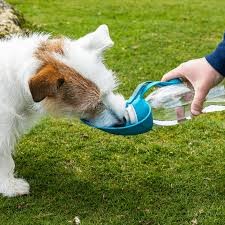



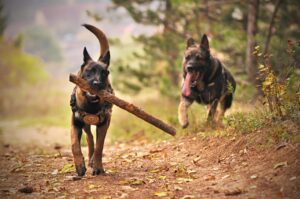



![The Ultimate Guide to Road Tripping with Your Dog [2025 Update]](https://bellabeanupdate.com/wp-content/uploads/2025/05/pexels-photo-1143369-300x209.jpeg)

